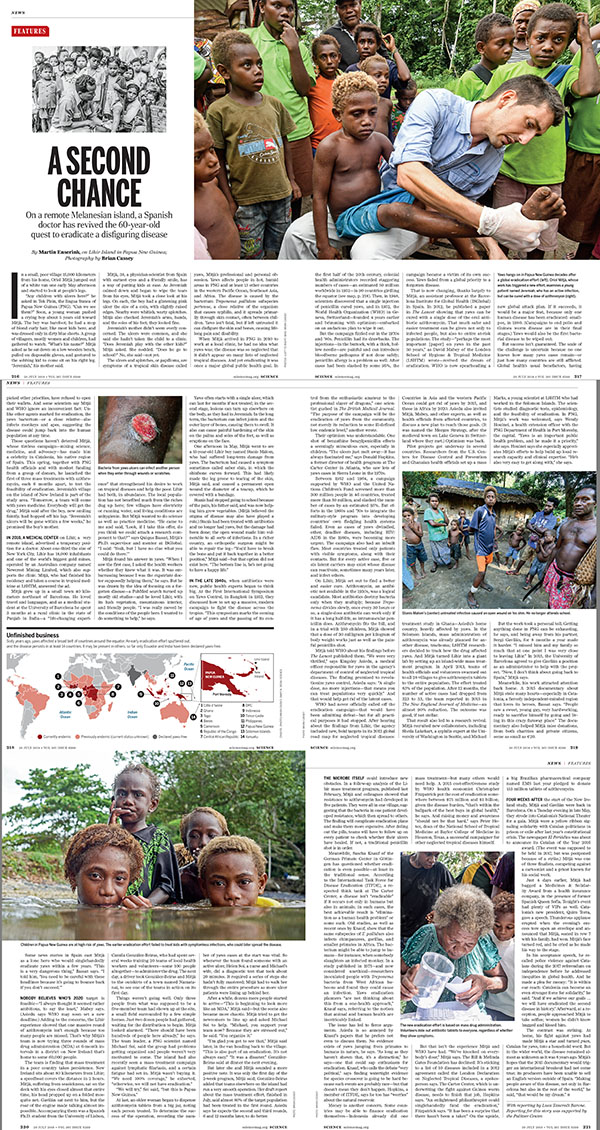A real pleasure to learn that for the first time I’ve had an image selected in a ‘science’ collection of ‘best of’ images.
An image I made on the job for the venerable and respected magazine ‘Science’ earlier this year has just been published in a fourteen pic collection entitled (rather staidly) “Our Favourite Science Photos of 2018”. The other thirteen pics are pretty damn stunning (although a couple appear a little ‘overworked’) and varied.
Although my contribution isn’t what one would call a ‘science’ pic as such it is a ‘science related’ pic … made during documenting the story of Yaws disease eradication on Lihir and Namatanai islands in the New Ireland area of remote Papua New Guinea. The original text accompanying the story was written by Science mag International News Editor Martin Enserink … and a blog post by ‘Science’ photo editor Bill Douthitt about how the assignment transpired can be found here … https://www.briancasseyphotographer.com/blog/comment/2018/07/5440/
A little bit of trivia for anyone interested … this is the first pic I’ve had published in a ‘best of’ collection made using the Sealife DC2000 underwater camera which I first wrote about here.
I would urge you to go to the link to see the entire ‘Best Science Photos of 2018’ collection here … https://vis.sciencemag.org/photosof2018/ … but for those with time constraints my selected pic is below. The caption accompanying the pic in the set reads “Eradicating Yaws Disease – Children in Papua New Guinea are some of the main victims of yaws disease, a bacterial infection caused by Treponema pallidumthat spreads through simple contact and attacks bones and skin—causing bright pink lesions and lifelong pain. Scientists hope to eradicate this little-known disease with a massive public health campaign—if governments, funding organizations, and the disease itself cooperate.”
The original magazine story may be found here … https://www.sciencemag.org/news/2018/07/remote-pacific-island-doctor-has-revived-60-year-quest-eradicate-disfiguring-disease … and the venture received support from the ‘Pulitzer Centre on Crisis Reporting’.
Image © Brian Cassey




